60 Strathallen Avenue, Northbridge NSW
Monday to Friday - 9am to 5pm
Age-Related Macular Degeneration (AMD)
Age-Related Macular Degeneration is the leading cause of blindness in Australia. It is a degenerative eye disease that can result in reduced central vision, but leaves peripheral or “side” vision in place.
What is the macula?
The macula is the region at the very centre of your retina. It is responsible for detailed vision and most of your colour vision.
AMD usually affects people over the age of 50 years, and becomes more common with increasing age. After the age of 75 years, 1 in 3 people have some form of macular degeneration. AMD, when inherited can also affect those of younger age.
AMD is caused by both genetic and environmental factors. Those with a family history have a 50% chance of developing AMD. Other risk factors include smoking and diet. Children of patients with AMD should be checked annually if they are over the age of 50 years.
Early stage AMD / Drusen
The early stage of AMD may not cause visual problems but does lead to an increased chance of developing wet or dry (late stage) AMD.
In this stage of AMD progression, the waste products of the retina begin to accumulate underneath the macula. These accumulations of waste products clump together and are known as drusen. During an eye examination the drusen appear as yellow spots on your retina. On OCT imaging, these can be seen as small bumps beneath the retina.
Late stage AMD
Loss of vision indicates the later stages of AMD.
The two forms of late-stage AMD are Dry and Wet AMD. Early detection of Wet AMD is important as the response to treatment is much more favourable.
Dry AMD
Slow form of the disease and results in a gradual loss of vision.
It occurs when retinal cells begin to die. This leads to patches of missing retina and a loss in vision. Dry AMD accounts for 33% of all late-stage AMD cases. Dry AMD can develop into Wet AMD so regular monitoring with an Amsler Grid is important.
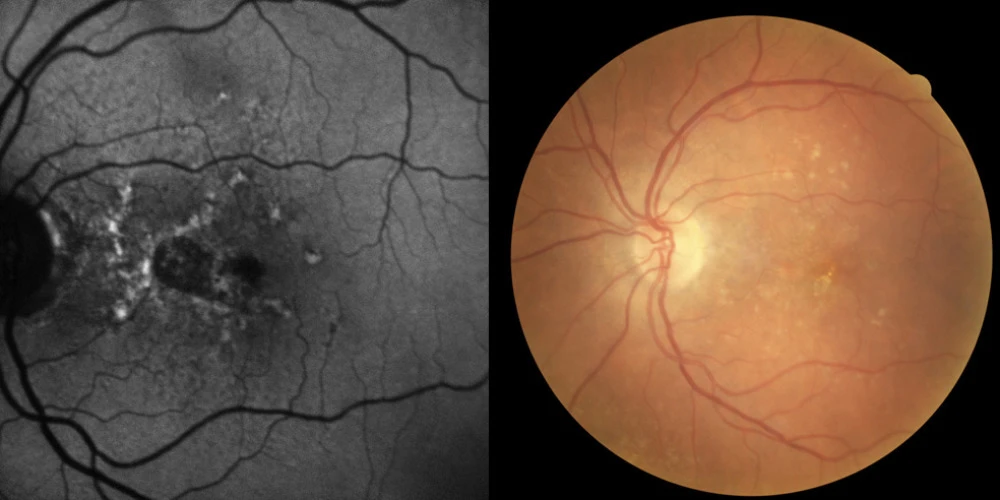
Dry AMD
Wet AMD
Visual changes associated are often sudden and severe.
Occurs when abnormal blood vessels from below the retina (the choroid) grow into the retina causing damage. This occurs in response to an imbalance of growth factors and is known as Choroid Neovascularisation (CNV). These new vessels are fragile and tend to rupture, causing leakage of fluid into the macula, which may lead to scarring and results in loss of central vision. On average, without treatment central vision is lost or severely diminished by six months. Without treatment, the majority of patients become legally blind in the affected eye.
Early detection of Wet AMD is crucial, so if any sudden changes (distortion of straight lines or a blurred patch) occur you should contact the clinic immediately. The earlier treatment is received the more likely a better outcome will occur.
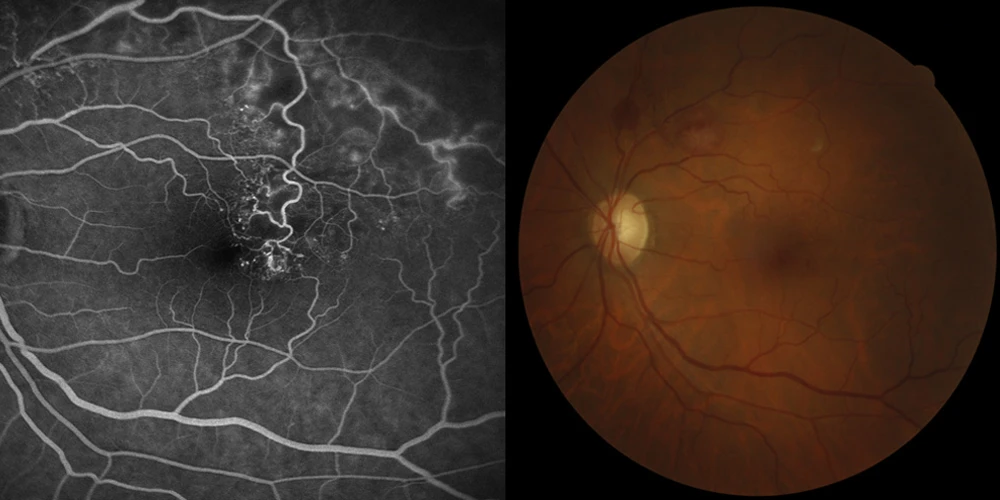
Wet AMD
Symptoms of AMD
There are clues you may have AMD.
- Distortion of lines where they appear wavy or bent.
- Dark patches or black spots appear in central vision.
- Increased illumination required when reading or difficulty when reading.
- Distinguishing faces becomes a problem.
- Problems picking up fine detail.
Minimising progression of AMD
There are things you can do to minimise the progression of AMD.
- Don’t smoke
- Eat more
- Fish (containing omega 3 and 6 fish oils) two to three times a week.
- coloured vegetables (especially greens and gold) and coloured fruit (contain Lutein)
- leafy greens including spinach, beans, and peas
- gold coloured vegetables include capsicum and corn.
- A handful of nuts a day - all nuts are good, especially brazil nuts (peanuts are of the least benefit).
- Antioxidants, like tea
- Eat less
- Orange vegetables like pumpkin and carrots, should not be consumed in excess as these are high in Beta-caratine
- Red meat, margarine and sugar intake.
- Consider vitamin supplements
- Patients, especially those taking Warfarin, should consult their local General Practitioner before starting any supplements.
- Macuvision vitamins may be taken depending upon the advice of your doctor. They may cause nausea or abdominal bloating.
- Fish oil tablets can be taken if you don’t eat fish
- Lutein tablets may be of extra benefit however the evidence supporting its use is limited. Taken in recommended doses they rarely cause side effects.
- Test your eyes with an Amsler grid once a week
Treatment
Treatment options are dependent on the stage and type of AMD.
For Dry AMD, there are no current treatments to reverse the effects. You can slow the progression by following our recommendations above.
Wet AMD treatments use prescription only medication that target the new, abnormal blood vessels that have grown onto the retina causing the leaking and scarring.
They are given via an intravitreal injection into the eye. On average people gain 8 to 10 letters on a vision chart. Deterioration of vision is prevented in ninety five per cent of patients. These injections need to be repeated on an ongoing basis long-term for best effect.

Intravitreal injections for the treatment of wet AMD
Treatment side-effects
The main risk of injections is infection. The chances of this are small and should not deter someone from commencing treatment. If left untreated, the chance of severe vision loss from wet AMD is much higher than the chance of severe vision loss from infection. The rate of infection is approximately 1 in 1000 injections. To prevent infection, betadine is used in all patients, and a sterile injection technique is used.
If you have injections you will be given a handout which lists the symptoms of infection and what actions to take in the very rare circumstance of this occurring.
Amsler Grid
Detecting small changes early can lead to an early diagnosis and prevent severe deterioration of your vision.
The Amsler grid test is a method for checking your central vision and the function of the macula.
- Wear your reading glasses and hold the grid at normal reading distance (20-50cm), cover one eye and look directly at the black central dot.
- Check whether all the lines are straight or whether they are blurred while still looking at the black dot.
- Repeat the procedure with the other eye.
- If the lines were blurred, wavy, crooked or if any of the lines were missing call us to make an appointment.
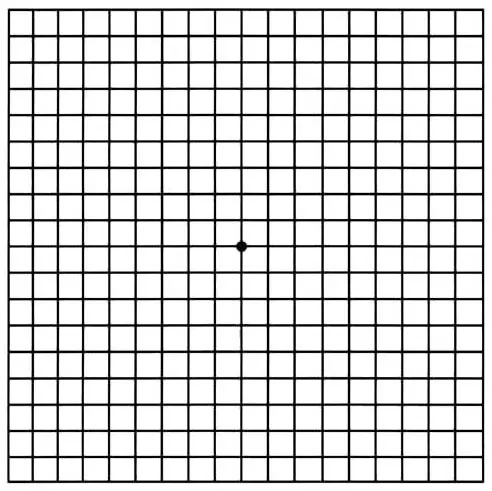
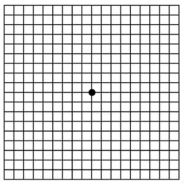
Normal
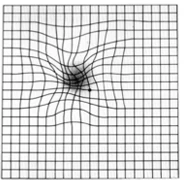
Get treatment ASAP
Do you have age-related macular degeneration? At Northern Sydney Cataract, we are here to help!
If you have specific questions, please call our friendly staff on 02 9958 0552 or email us at info@nscataract.com.au
For appointments and enquiries, please phone 02 9958 0552
Monday to Friday 9am - 5pm
© 2015– Northern Sydney Cataract | Privacy Policy | Disclaimer | Website by:
